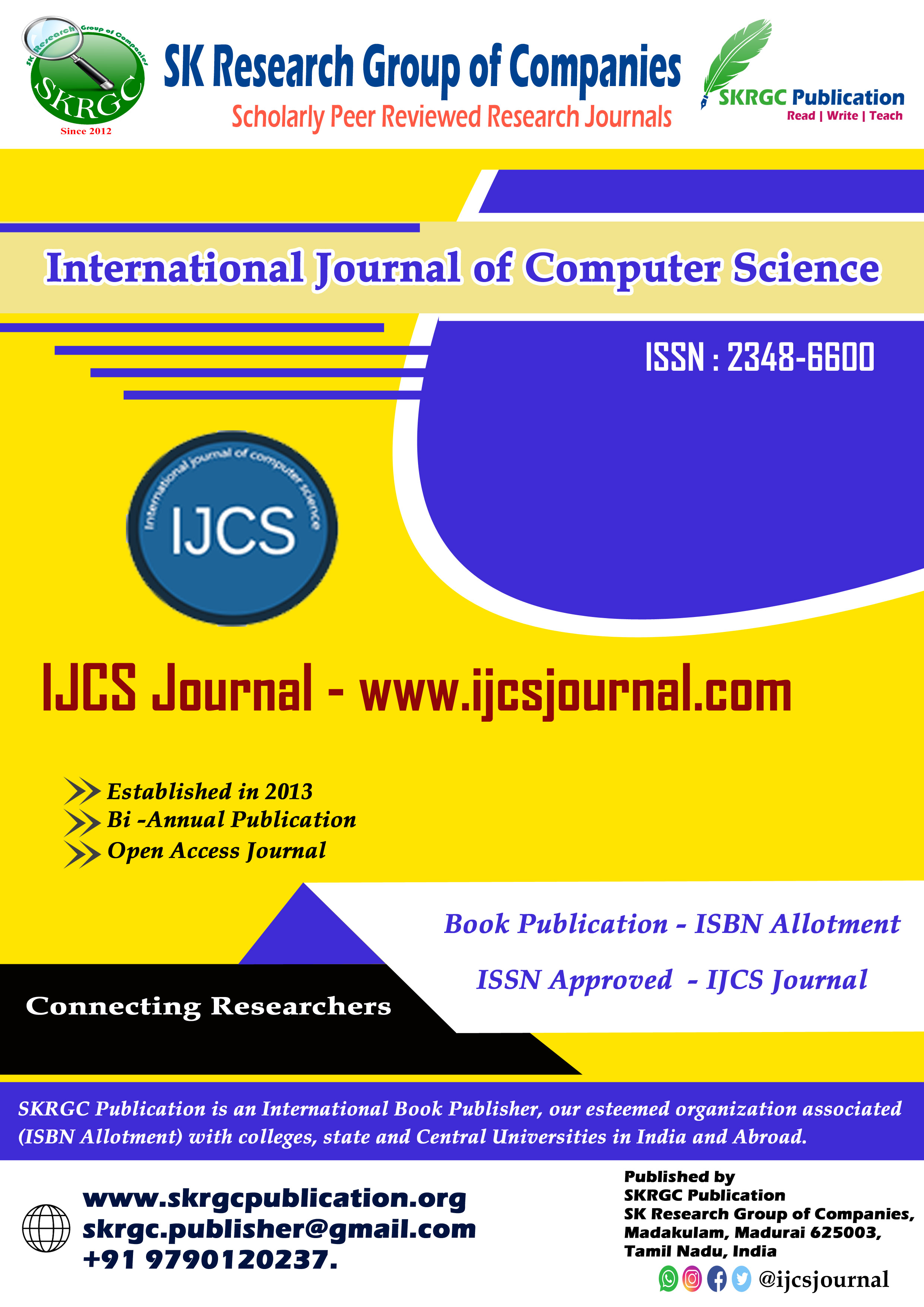MACHINE LEARNING TECHNIQUE FOR ANALYZING STUDENT INTEREST IN USING TIKTOK IN THE NEW E-LEARING SYSTEM DURING THE COVID-19 PANDEMIC
International Journal of Computer Science (IJCS) Published by SK Research Group of Companies (SKRGC)
Download this PDF format
Abstract
The prolonged COVID-19 pandemic has forced the world of education to change the method of delivering material from face-to-face to online. This change has had a big impact on both students and educators, one of which is student anxiety to take part in online learning and the difficulties experienced when studying independently while online. Tiktok is a social media platform that is currently booming and loved by the younger generation, which offers live sessions and can upload short videos. The advantages of tiktok can be used as a means to mingle and motivate students to take part in online learning. Besides that, the emotions of TikTok users when they see videos on TikTok have been carried out and it is known that users of productive age are more emotional. Several previous studies have conducted an analysis of the use of Tiktok using the questionnaire method. However, the questionnaire method cannot capture information about the emotions of e-learning system users. In addition, the use of a questionnaire as a media analysis is also less effective and requires more time to carry out the calculation process. From the research results it is known that students do not like the learning method with TikTok. This is corroborated by the accuracy rate of the Naïve Bayes method which reaches 80.32%.
References
[1] Aida Nabilah Azman, N. S. (2021). Acceptance of TikTok on the Youth towards Education Development. Borneo International Journal, 19-25.
[2] Amir, A. (2020). UTILIZATION OF TIK-TOK APPLICATIONS IN PANDEMIC TIMES COVID19. Jurnal
[3] Ilmu Hukum, 55-59.
[4] Anggi E Pratiwi, N. N. (2021). UTILIZING TIKTOK APPLICATION AS MEDIA FOR LEARNING ENGLISH
[5] PRONUNCIATION. International Conference on Education of Suryakancana.
[6] Arfan Shahzad, R. H. (2020). Effects of COVID-19 in E-learning on higher education institution students: the group comparison between male and female. Quality & Quantity.
[7] Buana, D. R. (2020). Analisis Perilaku Masyarakat Indonesia dalam Menghadapi Pandemi Virus Pandemi Virus.
[8] Salam, 217-226.
[9] Handrini Ardiyanti, C. K. (2021). Efektivitas model pembelajaran daring berbasis tiktok. Jurnal Komunikasi Profesional, 285-293.
[10] Hong Chen, M. W. (2021). Research on the Communication Strategy of Tiktok in the People's Daily. International Journal of Sosial Science and Education Research , 86-95.
[11] Jefri Setyawan, A. F. (2021). THE EXPERIENCES OF INDONESIAN PEOPLE IN THE CONTEXT.
[12] CHARACTER DEVELOPMENT CONTENT IN TIKTOK APPS. Prosiding Seminar Nasional Fakultas Psikolohi Universitas Diponegoro, (pp. 451- 464).
[13] Lerís, D., Sein-Echaluce, M. L., Hern, M., & Concepci. (n.d.). Validation of indicators for implementing an adaptive platform for. 2017: Elsevier.
[14] Liang, X. (2021). Research on How to Perceive Their Behavior for International High School Students Based on Using TikTok with Semi-Structured Interview. International Conference on Sosial Sciences and Economic Development (ICSSED 2021) (pp. 797-799). Atlantid Press.
[15] Nanigopal Kapasia, P. P. (2020). Impact of lockdown on learning status of undergraduate and postgraduate students during COVID-19 pandemic in West Bengal, India. Children and Youth Services Review.
[16] Nur Rohim Yunus, A. R. (2020). Kebijakan Pemberlakuan Lock Down Sebagai Antisipasi Penyebaran Corona.
[17] Salam, 227-238.
[18] PalomaEscamilla-Fajardo, M. S.-C. (2021). Incorporating TikTok in higher education: Pedagogical perspectives from a corporal expression sport sciences course. Journal of Hospitality, Leisure, Sport & Tourism Education.
[19] Robert Connor Chick, M. G. (2020). Using Technology to Maintain the Education of Residents During the COVID-19 Pandemic. Journal of Surgical Education, 729-732.
[20] Shuai Yang, Y. Z. (2019). Analysis of the Reasons and Development of Short Video Application—— Taking Tik Tok as an Example. th International Conference on Information and Sosial Science.
[21] Smith-Peavler, E., Gardner, G. E., & Otter, R. (2019). PowerPoint Use in the Undergraduate Biology Classroom: Perceptions and Impacts on Student Learning. Journal of College Science Teaching, 74- 83.
[22] Soni, V. D. (2020). Global Impact of E-learning during COVID 19. SSRN Electronic Journal. Togi Prima Hasiholan, R. P. (2020). PEMANFAATAN MEDIA SOSIAL TIK TOK SEBAGAI MEDIA KAMPANYE GERAKAN CUCI TANGAN DI INDONESIA UNTUK MENCEGAH COVID-19. Jurnal
[23] Ilmu Komunikasi, 70-80. [24] Weiyong Liu, P. Q. (2020). Detection of Covid-19 in Children in Early January 2020 in Wuhan, China. The New England Journal of Medicine.
[25] Wenjun Cao, Z. F. (2020). The psychological impact of the COVID-19 epidemic on college students in China.
[26] Wildana Wargadinata, I. M. (2020). Student’s Responses on Learning in the Early COVID-19 Pandemic. TADRIS : Jurnal Keguruan dan Ilmu Tarbiyah, 141-153.
Keywords
E-Learning, Tiktok, Student Opinion, Machine Learning

